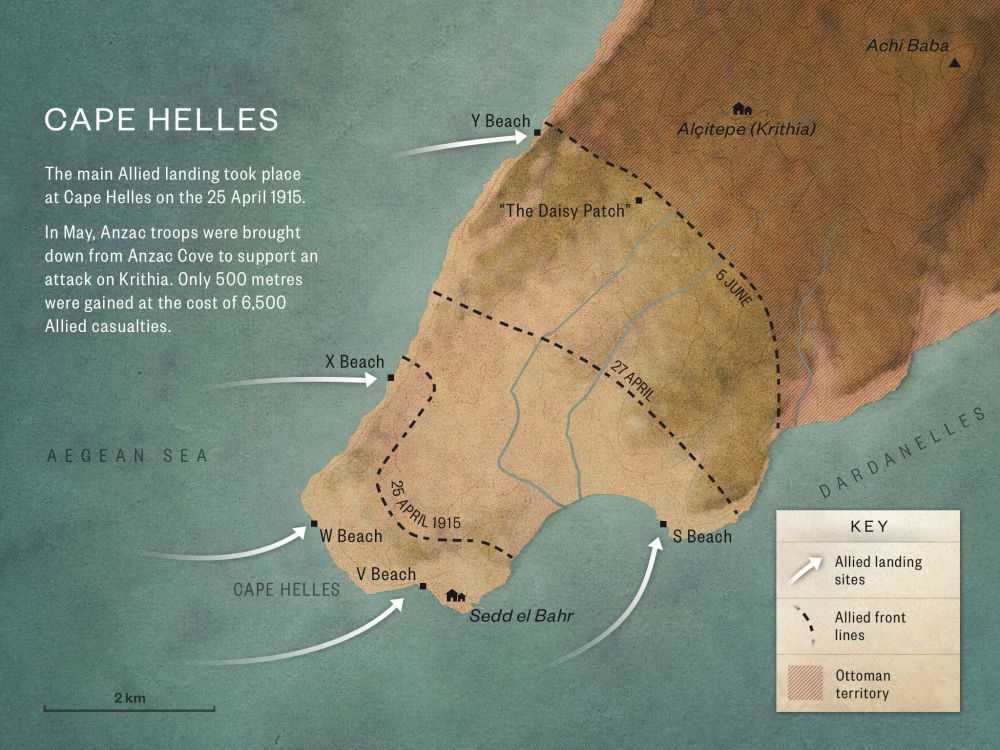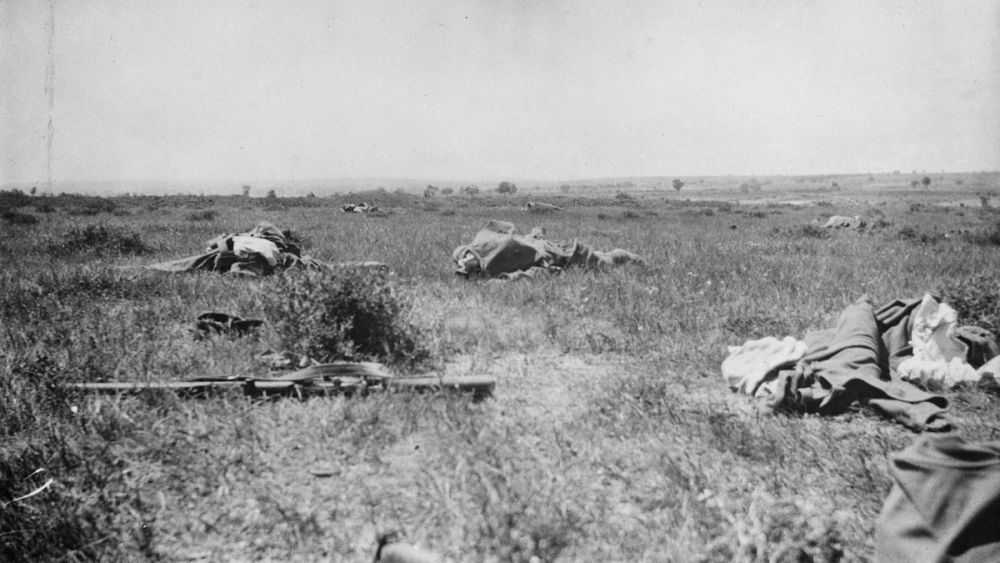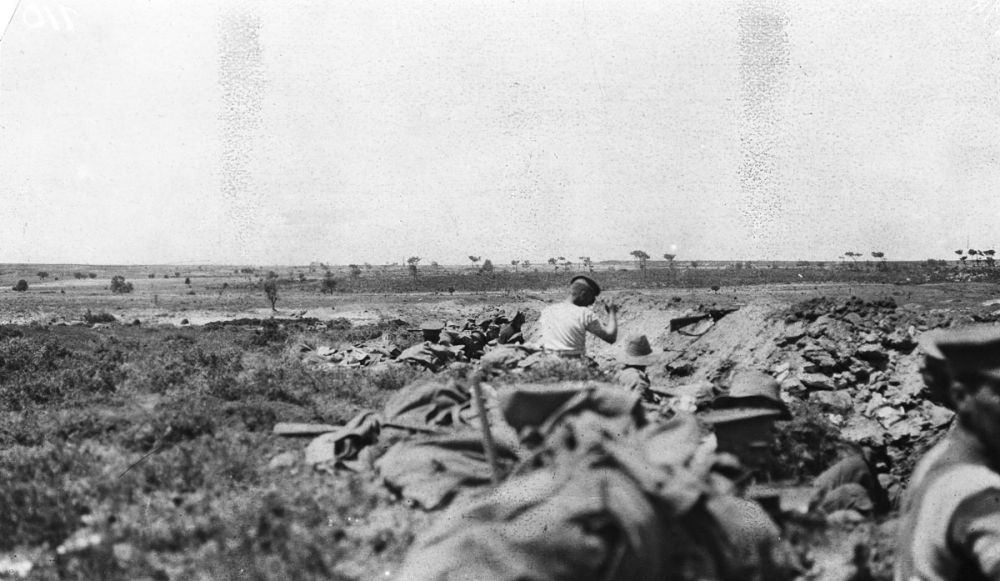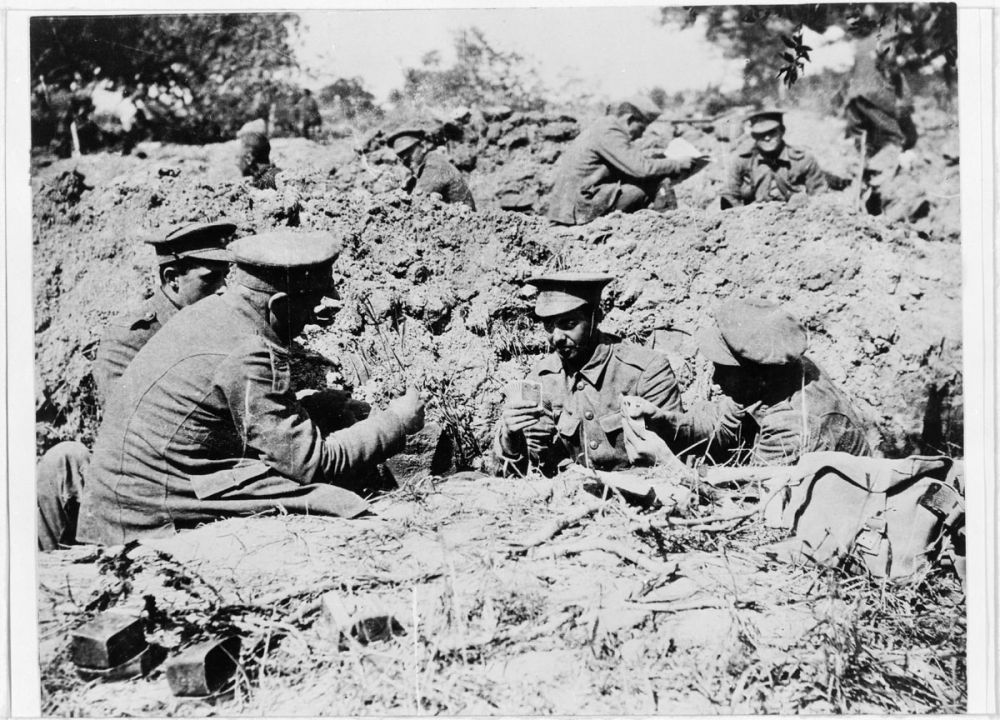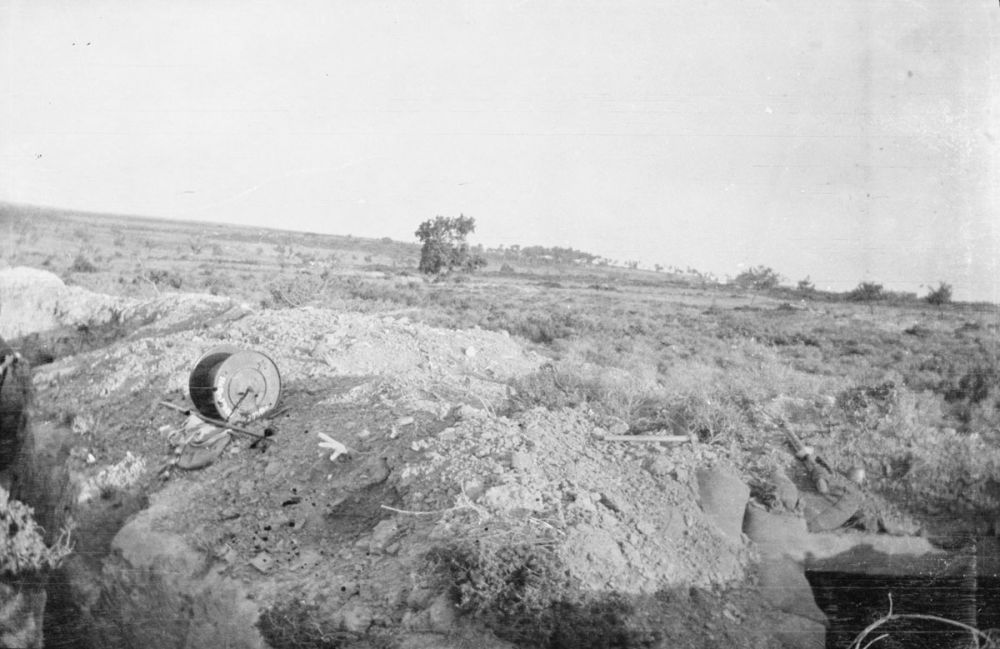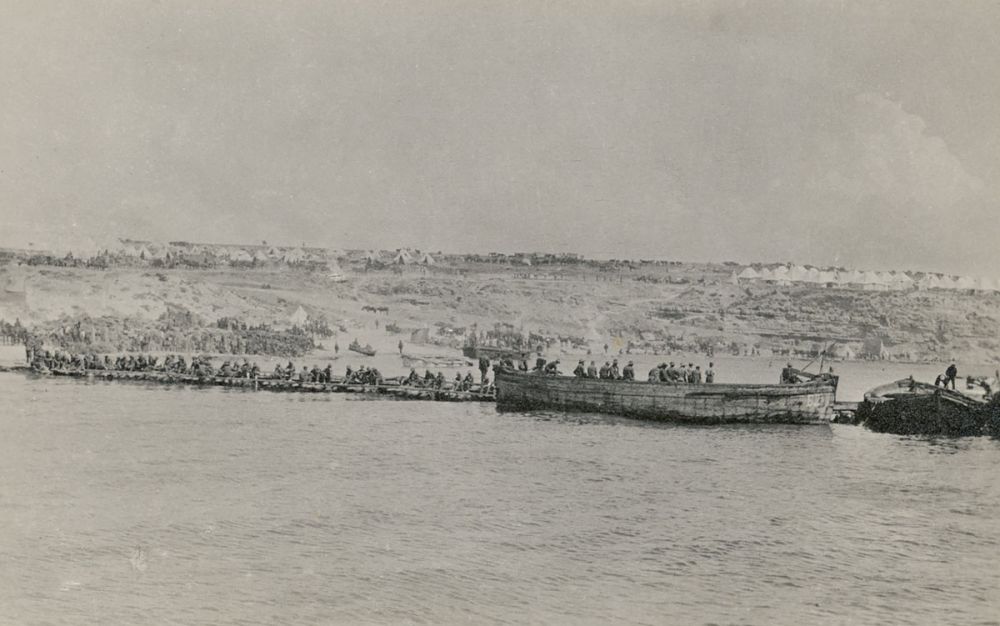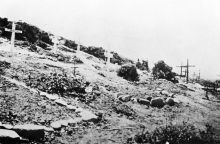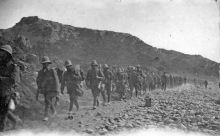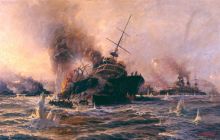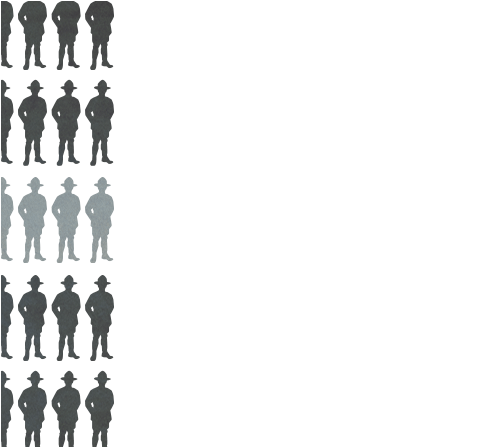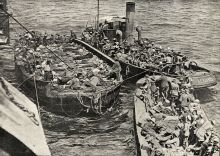Twelve Tree Copse
You’re at Twelve Tree Copse Cemetery. At the back of the cemetery is the New Zealand Memorial to the Missing, which commemorates those whose bodies were never found or identified in the battle at Krithia on the 8th of May 1915. You are standing just north of where the New Zealand Infantry Brigade attacked.
If you look towards the village you can see the minaret of the mosque that was the New Zealand goal. The Turkish frontline was perhaps 300 to 400 metres from where you are standing and stretched across the front of this village.
An Australian and a New Zealand Infantry Brigade were brought down from Anzac. The New Zealand attack took place on the 8th of May at 10.30 in the morning. After a 15-minute artillery bombardment, three New Zealand Battalions with one in reserve attacked either side of where you are standing. They went through these open fields, which the soldiers referred to as the Daisy Patch because of the wild daisies and poppies that grew in profusion.
The New Zealanders started their attack well behind the British frontline and many men were killed before they even got to the front trenches. As they approached the area where you stand they came under intense fire. The Wellington Infantry Battalion, which was to the left of you advanced the furthest. They got about 300 metres beyond the frontline.
Because of the intense fire everyone took cover. The living lay among the dead. They dared not move because Ottoman snipers shot at any sign of life. Many men spent all day in the hot sun absolutely still, listening to the moans of their mates nearby, yet they were unable to do anything to help.
Men went to ground and if they had their entrenching tool, they put the shovel part over their head to give them some protection.
General Hamilton ordered another attack at 5.30 p.m. and so the Otago Battalion, which had been in reserve, came up and linked up with the Canterbury, Auckland and Wellington Infantry Battalions. After 15 minutes of artillery bombardment, the New Zealanders attacked again. This time the Australians on your right also attacked and both brigades were cut to pieces.
On the 8th of May 1915, New Zealand had over 800 casualties. This attack marked the end of any further offensive action on the part of the New Zealanders at Krithia. They dug in and remained here manning the trenches.
They then went into reserve and worked as a labour force at the beaches. Finally they were taken back to Anzac Cove in late May, where they reinforced the defences and played their part in the August offensive.
Some of the New Zealand dead are buried in Twelve Tree Copse Cemetery, but most are missing, with no known graves. They are commemorated on the wall of this memorial. In fact, of the 2,779 New Zealand dead from the Gallipoli campaign, there are only 341 graves. Some are buried at sea but most are missing.
There are still bones scattered through the fields where this New Zealand attack took place. Though they could be Turkish or British, they could also be the bones of New Zealand soldiers.


